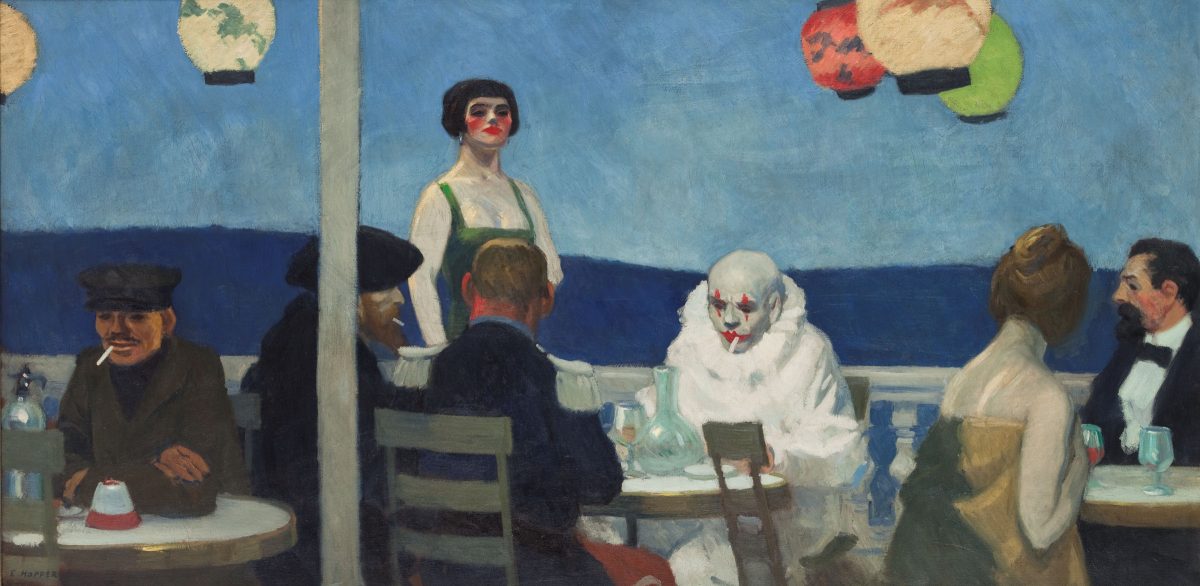Soir Bleu depicts a melancholic clown smoking a cigarette and sitting at a table in a French cafe. There are six other figures in the painting: a bereted man, also smoking but divided from the rest by a partition, sitting by himself at another table to the clown’s far right, a rouge-cheeked woman in a low-bodiced olive dress standing at the clown’s right who could be an early 20th century barista or another lost performer, two men (one with epaulettes pushing down his shoulders, causing his coat to curve preposterously upward, his physical back serving almost as a new chairback) who share the clown’s table but do not see him, and a well-to-do couple in evening wear seated at the clown’s left who appear faintly aware of the clown. Nobody in this tableau sees each other. They are too busy with their own oddball identities to care. Hopper’s painting is almost a darkly hilarious counterpart to Velázquez’s Las Meninas, equally unsettling in the way that it challenges the spectator to reassess his perception of the assembled players and question his humanity. With Hopper, the casual voyeurism of overhearing snippets in a sad cafe serves in lieu of painters and mirrors.
This painting served as my desktop background for many years. Until this morning. When I realized that I had been projecting my own identity into the role of the clown and hadn’t visited the cafe in a good three years. I will not tell you what new painting that I put in Hopper’s place. You would have to know me or visit my apartment to loosen the answer.
Sometimes we must make bold choices. New people enter our lives, inspiring us to rethink who we are and to become better souls. Old friends grow deeper and richer as we learn to open our hearts more to the right people. Others who wallow in the petty draw of snap judgments must be crisply dropped and privately denounced. They’re too smitten by the cafe. And who can’t love the celeste backdrop and the colorful globes dangling from above? But Hopper knew that it was a trap.
